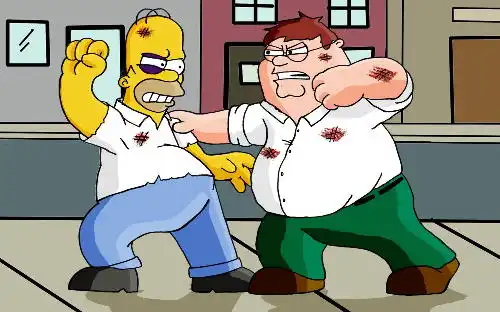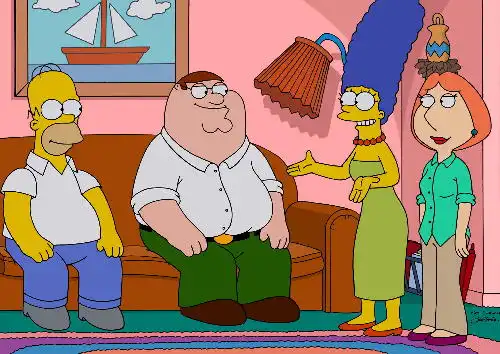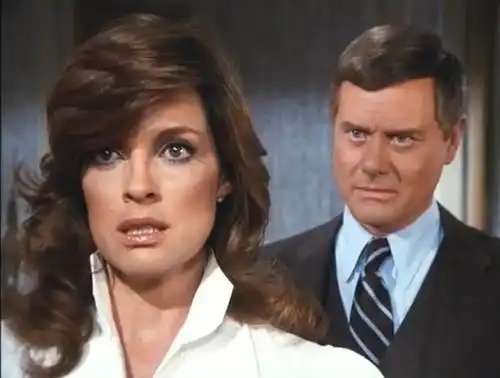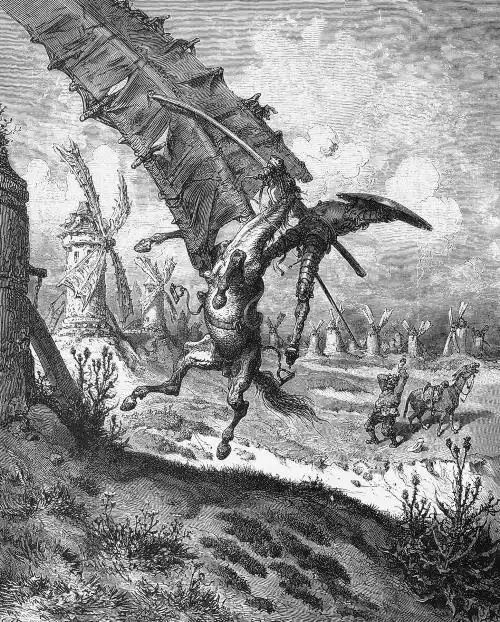Failing Father Figures Review of The Simpsons and Family Guy, by Stefan Stenudd
That might be material for easily achieved comedy, but it's also so predictable that it gets boring at length. Even in comedy, the characters need more complexity than that. Homer Simpson and Peter Griffin are caricatures with no redeeming feature. That would be impossible for the main character of a drama, since we just wouldn't care about his or her fate. It can work in comedy obviously, since both shows are very popular but not without other characters who evoke our sympathy and care. More often than not, they do so because of their struggle to repair the damages caused by Homer and Peter. That would be the wives, Marge Simpson and Lois Griffin. They are also similar characters, especially in their motherly care for the family and their constant struggle to solve the problems caused by their husbands. It's a complete mystery how they can love their men like they do.

The Evil Version of the Hopeless HusbandThe recurring drama of the innocent wife suffering the wrongdoings of her inconsiderate husband is a reminder of the TV series Dallas, which had its peak in the 1980s. There, the villain JR Ewing was in no way hesitant to let also his wife Sue Ellen suffer from his vicious deeds.Sue Ellen was just as incomprehensibly faithful to her husband as Marge and Lois. Not only that. She was blind to her husband's alarming moral shortcomings. In countless episodes, Sue Ellen refused to see how evil JR was, until the very end of the drama. Then, she saw it and seemed to decide to finally leave him.

But JR was not exactly the same poor excuse for a husband as Homer and Peter. They are ignorant of the perils they cause others, but JR was quite aware of it. He even sought it consciously. JR was the evil version of the no-good husband. That is why he never succeeded with any of his vicious plots. In most dramas, the bad guy can't win. The good guy can lose, even his life, but the bad guy can't win. We would not tolerate it.
Bad but Not EvilContrary to JR, Homer Simpson and Peter Griffin sort of want to be good, if they can. So, when they mess things up and others have to save the day, both Homer and Peter actually realize their own faults and decide to reform. But that reform never lasts to the next episode.That's classical dramaturgy, having the protagonist overcome the obstacles and change through the experience. Actually, the protagonist is usually the only one changing fundamentally, not to make the plot too complicated. When this happens in an episode of The Simpsons or Family Guy and that's a vast majority of them Homer and Peter are the protagonists of the story. JR never was, because he occupied the role of the antagonist. In episodes where Homer and Peter don't at all realize their shortcomings, they are not the protagonists of the drama. Then they are most often the antagonist, the one causing the problem that needs to be solved by somebody else, who is most likely the protagonist of that story. Usually, that's the wife. Of course, whatever the wives realize, it never leads to divorce. So, the husbands and wives take turns being the protagonist. But it rarely happens that the wife is the antagonist, or we would lose our sympathy for her, and then we'd care less about how the story ends.
Too ConventionalThis basic setting of a hopeless husband and a darling wife is not very inspired. It has to get boring at length, no matter how many laughs are induced. Also, it's so conventional. The monster father and the saintly mother.Just flipping the roles would have made it much more interesting, but also more challenging to the audience. A monster mother might not be a laughing matter to the general public. At least that's what the producers fear. I have faith in the public being much more open-minded to unusual sets of characters, breaking the taboos of prejudice. As long as it is plausible. And there have certainly been evil mothers in fiction as well as in reality. We can handle that truth.
The AntiheroJR Ewing is the typical example of the villain in a drama, but Homer Simpson and Peter Griffin with their basically good intentions are not villains even if their actions sometimes get them very close to it. They are characters who want to be heroes, but fail utterly at it.So, they are antiheroes. The antihero is a figure in drama since the days of Ancient Greece. The most well-known example of this archetype is Don Quixote, created by the brilliant writer Miguel de Cervantes in the early 17th century. Don Quixote imagines that he is a chivalrous knight in the Middle Ages, fighting dragons and saving fair maidens.

Were it not for his faithful companion Sancho Panza cleverly getting him out of the mess he creates, his days of chivalry would soon be over. Thereby, Sancho is related to Maude Simpson and Lois Griffin. Like them, he refuses to desert his companion, although his common sense frequently tells him he should. Don Quixote is a fool. His only redeeming quality is that his heart is in the right place. That's also what Homer and Peter prove about themselves, when it's time for reckoning. But what he has and the modern versions lack, is a sense of purpose. Don Quixote is an idealist, which makes his adventures all the more exciting and his character much more sympathetic. We care, because he is the kind of guy who also does. Homer and Peter, on the other hand, may have hearts of gold, but they are all the time simply out to satisfy themselves and their own sudden urges. They are victims of their whims and impulses, because they have no inhibitions at all to control their cravings. In that way, they are not men but beasts. Beasts can be entertaining, too. So, that in itself doesn't make them unfit to carry stories. But we can't care very much about them, since their motivations are completely selfish. The antihero archetype is compelling because he or she has sort of a calling, not just instinctive needs. That's where not only Homer Simpson and Peter Griffin fail, but also the stories about them.
Stefan Stenudd October 28, 2015
More Reviews
About CookiesMy Other WebsitesCREATION MYTHSMyths in general and myths of creation in particular.
TAOISMThe wisdom of Taoism and the Tao Te Ching, its ancient source.
LIFE ENERGYAn encyclopedia of life energy concepts around the world.
QI ENERGY EXERCISESQi (also spelled chi or ki) explained, with exercises to increase it.
I CHINGThe ancient Chinese system of divination and free online reading.
TAROTTarot card meanings in divination and a free online spread.
ASTROLOGYThe complete horoscope chart and how to read it.
MY AMAZON PAGE
MY YOUTUBE AIKIDO
MY YOUTUBE ART
MY FACEBOOK
MY INSTAGRAM
MY TWITTER
STENUDD PΕ SVENSKA
|
 Ever Young
Ever Young